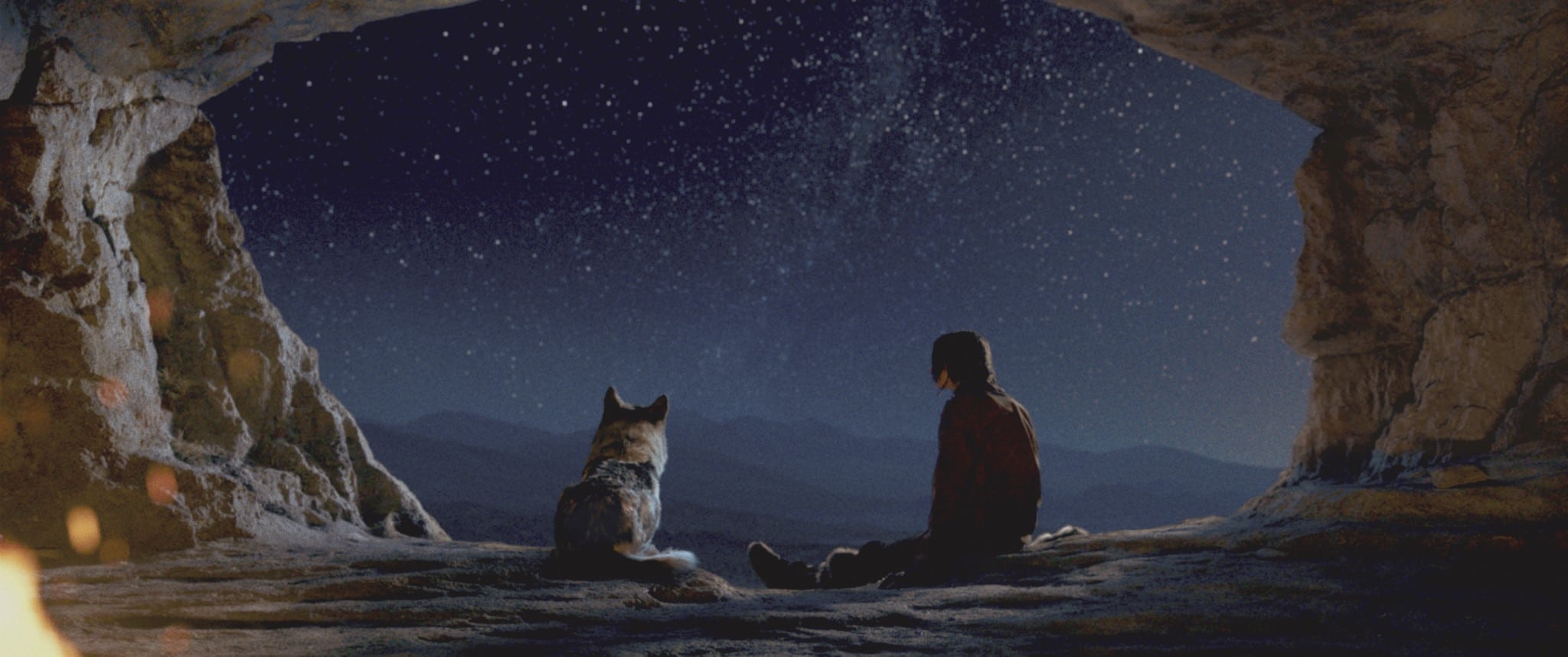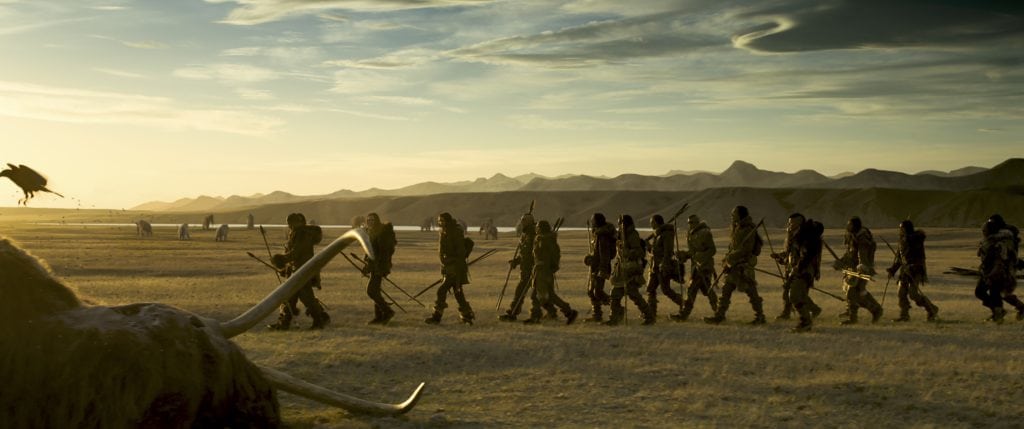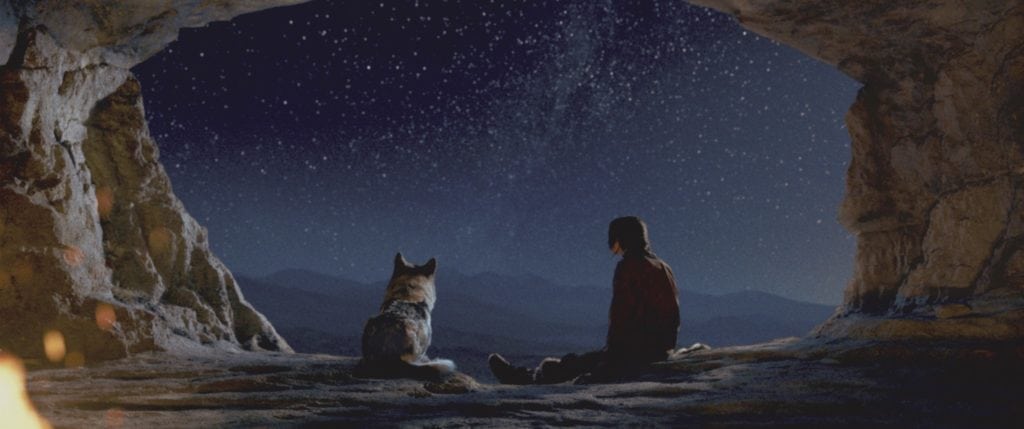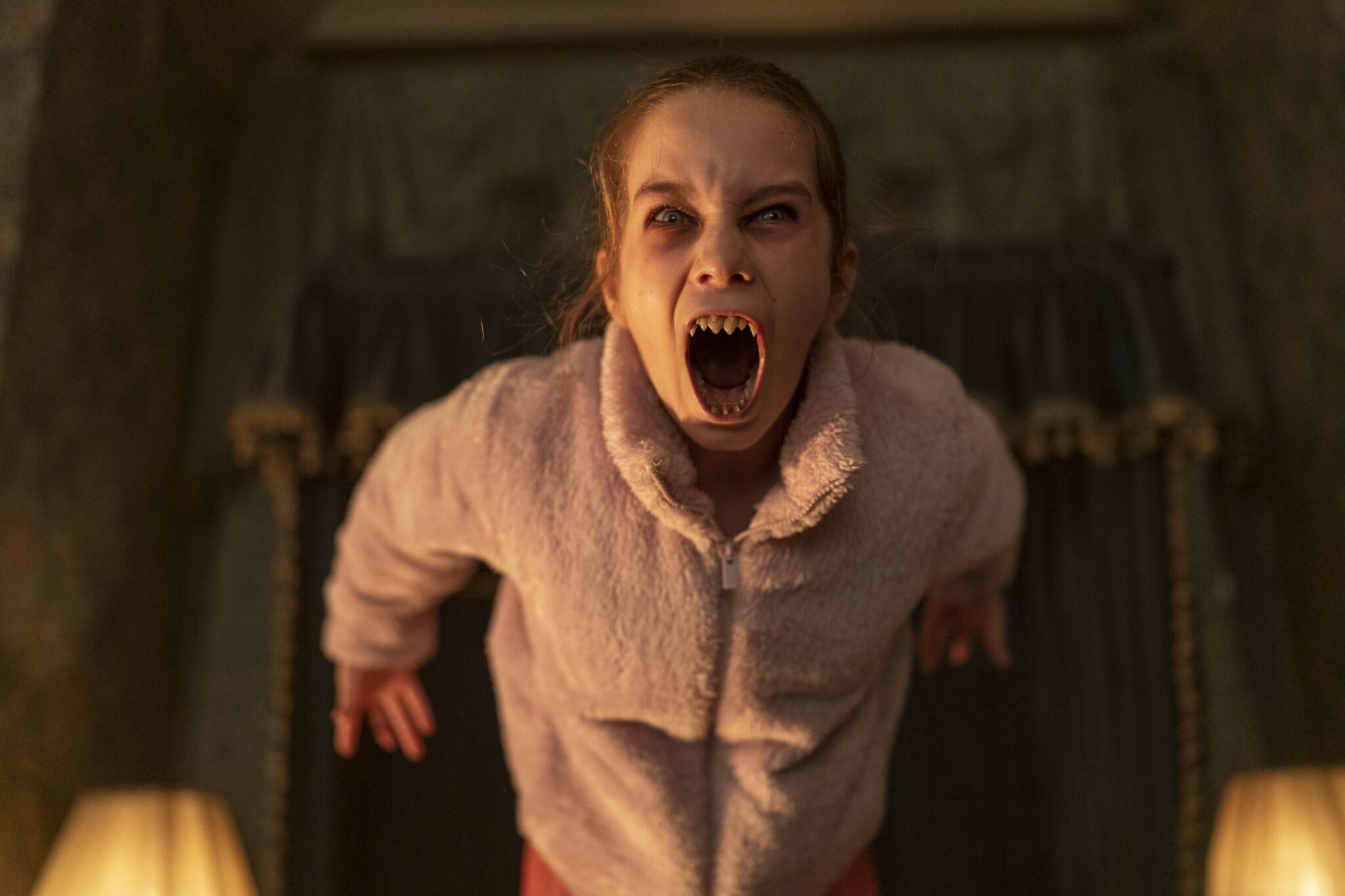Set twenty thousand years ago in Ice Age Europe, Alpha is a story of struggle and survival, of fear and courage, but it also is a story of an unlikely bond between natural enemies that brought a new way for both of them to advance. This is the very first boy-and-his-dog story.
The world of the film is at once awesomely beautiful and fearfully dangerous. (And the cinematography makes this very clear.) In Ice Age Europe, winters would be long and harsh. The animals were deadly. Cro-Magnon humans lived a tribal life with stone implements?arrows and fire were the highest technology. It is in this world that Keda (Kodi Smit-McPhee), the son of the tribal chief (Johannes Haukur Johannesson), is set to go out into the wild world outside his village on his first hunt. The tribe needs the yearly bison hunt to survive the winter. Keda has finally been chosen to take part. But it is an arduous and very dangerous excursion. Keda?s father is hoping to groom him for leadership. His mother fears for his safety.
After a long journey the hunters, along with those from another tribe, find the bison herd. Keda tries to have courage, but in his fear he is attacked by one of the bison and falls over a cliff. His father is distraught, but the tribe needs the meat of the bison, so Keda is left for dead.
Keda survives the fall, but is seriously injured. He begins his journey, hoping to find his way home. There are numerous hardships and challenges along the way. In his injured condition, Keda is attacked by a pack of wolves. He manages to wound one in his escape. When the injured wolf is abandoned by its pack, Keda can?t bring himself to kill it. Instead he carries it to a cave and cares for it. Through a long process Keda and the wolf learn to trust one another. They provide each other with companionship as well as joining together to hunt. As Keda slowly struggles to find his way home, the wolf, whom he calls Alpha, stays by his side. Neither Alpha nor Keda will abandon the other. Each is willing to sacrifice themselves for the other?s safety.
Perhaps it was such an encounter that was the first step in the connection between humans and canines which has evolved into our love for pets. In the film, it is certainly a transformative experience. It is transformative not only for Keda and Alpha
The film tries to give us a glimpse at our universal past. These are homo sapiens, and are portrayed as versions of ourselves. They are not brutish or animal-like. They have community and family. They have language and religion. They are filled with fear and courage and love and commitment. They are not just individuals each looking out for self. They know that their fate and survival are tied to one another.
The film also shows that there is more to leading than just being the strongest. Keda?s father, chief of his tribe, takes Keda aside because he wants to prepare him to be a leader. Before the hunt he encourages him, ?Prove you can lead. Find your strength.? He also, one night on the hunt, reflects on the wolves they hear howling?how the Alpha wolf must be wary of the others who seek its place. But Keda?s strength turns out to be different than his fathers. Keda?s mother tells his father before they leave, ?He leads with his heart, not his spear.? That is why it is that Keda saves rather than kills Alpha. That decision, made with the heart, turns out to be exactly want he needed to survive the ordeal of the journey home. That also brings new life and hope to the tribe. It is not always strongest who best leads. Often real leadership is found in caring for the others more than self.
Photos courtesy of Sony Pictures Entertainment








